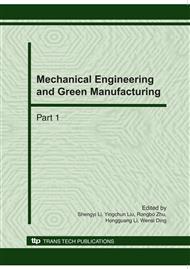p.1855
p.1859
p.1865
p.1870
p.1876
p.1881
p.1886
p.1891
p.1896
Properties of the Plasma Sprayed NiCrAlY+ (ZrO2+CaO) Graduated Coating on 1Cr18Ni9Ti Steel
Abstract:
The plasma sprayed gradated coating with the bottom layer of NiCrAlY and the top layer of (ZrO2+CaO) was prepared on the 1Cr18Ni9Ti steel surface by the plasma spraying technique. The phase structure and morphology of the gradated coating were analyzed by means of X-ray diffraction (XRD) and scanning electron microscopy (SEM). The high temperature oxidation resistance of the plasma sprayed samples at 800°C was investigated. The oxidation kinetics curve was worked out. The wear-resistance behavior of the graduated coating under dry sliding against GCr15 steel was evaluated on a ball-on-disc test rig. The results show that the thickness of gradated coating is about 320μm. The plasma sprayed gradated coating on stainless steel surface can improve the high temperature oxidation resistance of stainless steel. The oxidation rate of stainless steel is less than that of plasma sprayed gradated coating. The oxidation coating of plasma sprayed sample was very dense and is not easily exfoliated. The dense oxidation coating prevents the stainless steel from more oxidation. The friction coefficient of the 1Cr18Ni9Ti substrate was about 0.33 on dry sliding against the GCr15 steel, while the graduated coating experienced abated friction coefficient to 0.21 on the same testing condition.
Info:
Periodical:
Pages:
1876-1880
Citation:
Online since:
October 2010
Authors:
Price:
Сopyright:
© 2010 Trans Tech Publications Ltd. All Rights Reserved
Share:
Citation:


